Quality assurance (QA) is essential for maintaining the quality of software products.
It focuses on preventing defects and ensuring the software meets its requirements and specifications.
But without a proper quality assurance plan, creating effective testing strategies and managing issues can be difficult.
This guide will teach you how to create a solid QA plan using simple, easy-to-follow steps so you can maintain a standard level of quality in your projects.
Here's what you will learn:
- What is a quality assurance plan?
- Why is it important?
- Steps to create an effective plan for quality assurance.
Let's get started.
What is a Quality Assurance Plan?
A quality assurance plan (QAP) is a document that outlines the process and resources required to make the final product meet all specified quality standards.
It serves as a reference guide for developers and the QA team to follow throughout the software development lifecycle.
It provides a way to evaluate a product or service by:
- Meeting business goals and customer requirements.
- Compliance with regulatory standards.
Importance of a QA Plan
Every organization needs to have procedures for proper quality management.
A well-structured quality plan specifies how testing will occur, what tools will be used, and what criteria will be applied to evaluate the product's quality.
Here are some benefits of having a plan for your QA process:
- Guarantee high-quality and user-friendly products.
- Make the software reliable and easier to maintain after updates.
- Identify defects early in the development process.
- Mitigate risks to prevent unexpected issues.
- Prioritize critical bugs that impact functionality.
- Maintain consistency in your quality assurance process.
- Save time and resources by avoiding costly post-release fixes.
- Effective team communication and project management.
- Faster time to release quality software products.
- Increased customer satisfaction and trust.
Steps to Create a Quality Assurance Plan
Now that you know the importance of a QA plan, it's time to create one for your testing activities.
Here are six easy steps you can follow:
Define Your QA Objectives

The first step in creating a QA plan is to know the purpose and scope of your project.
Set clear objectives that should align with your project goals.
You can do this by answering these important questions:
- What are the product's deliverables and requirements?
- Who are the target audience or end users?
- What are the quality standards?
- How will the success criteria be selected?
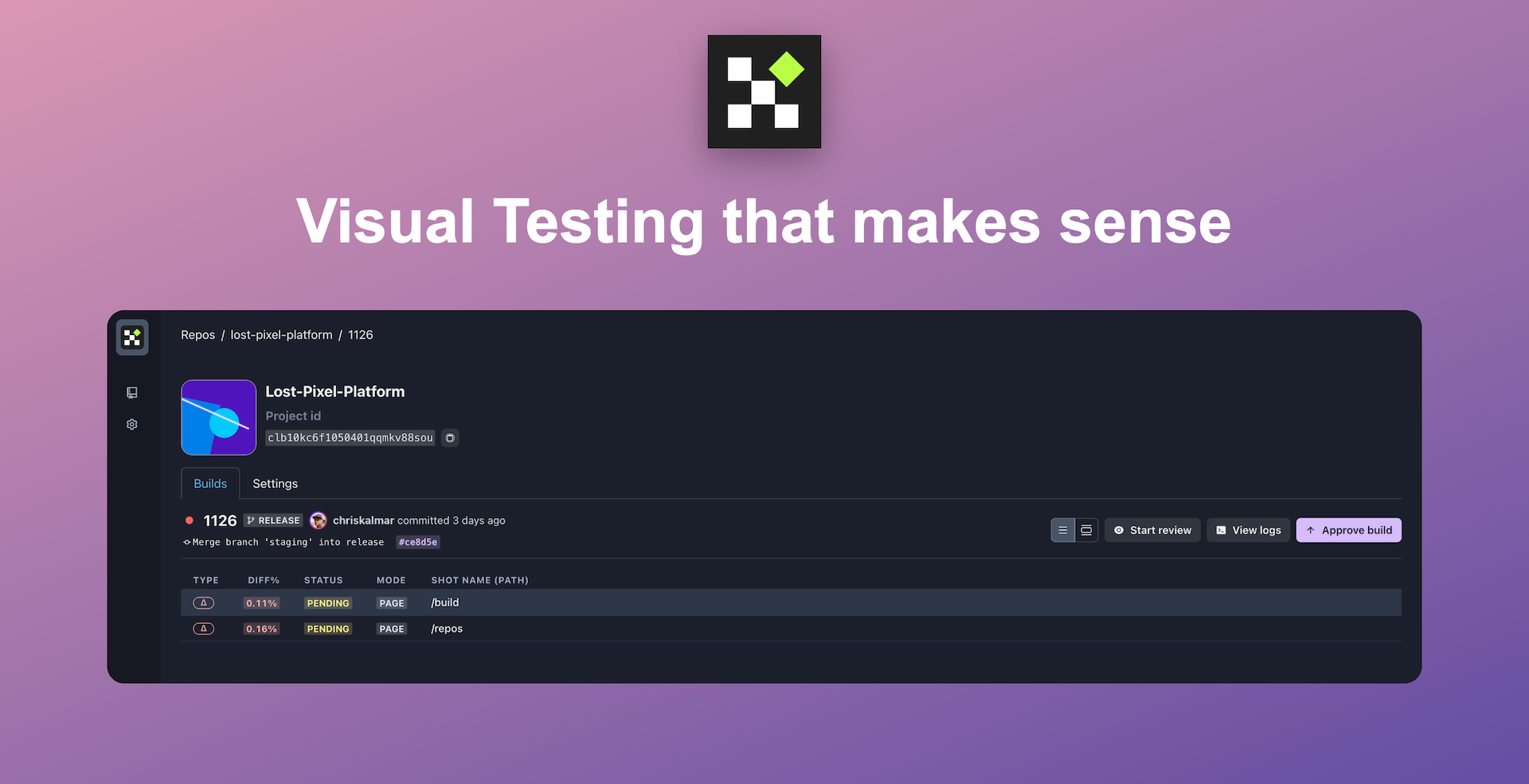
Set up visual regression tests in minutes with Lost Pixel Platform. Do not let your users find bugs first.
You need to identify any specific requirements and considerations critical to the project. Such as:
- Customer expectations: Learn what your customers desire and how they want to use your product. This will lead you to prioritize their needs and deliver solutions that exceed their expectations.
- Software Requirements: Identify the functional and non-functional requirements that need to be validated. This includes key features, performance, security, and usability requirements that impact quality and user experience.
- Compliance Requirements: Consider the industry standards or rules your project must follow.
- Competitor Analysis: Research the market trends and identify key competitors you need to keep up with.
- Schedule and Budget: Estimate the time and cost for successful plan execution.
Once you have defined your test objectives, you can prioritize them based on the project timeline and available resources.
Tip:
You can set SMART goals to define success criteria and deliver timely results.
- Specific: Identify core features and prioritize them. Focus on the most critical parts of your application first.
- Measurable: Keep your objectives measurable to track your progress. For example, reduce post-release bugs by 50%.
- Achievable: Make sure your goals are realistic and can be achieved on time.
- Relevant: Your goals should align with your business objectives and user expectations.
- Timely: Set deadlines to complete tasks and remain focused.
Identify Key Stakeholders

The next step is to involve all relevant parties in your QA plan and regularly communicate with them to understand their requirements and gather feedback.
After identifying the stakeholders, you can assign roles and responsibilities to the QA team.
This will help you determine who will be involved and what tasks they will perform.
Such as:
- Developers: Provide technical requirements and help in fixing issues.
- Product owners: Validate that the finished product meets requirements and user expectations.
- Project managers: Allocate time and resources and oversee the quality assurance activities.
- Testers: Create test plans, run the test cases, and report issues.
- End-users: Give feedback on product usability.
Create a Test Strategy
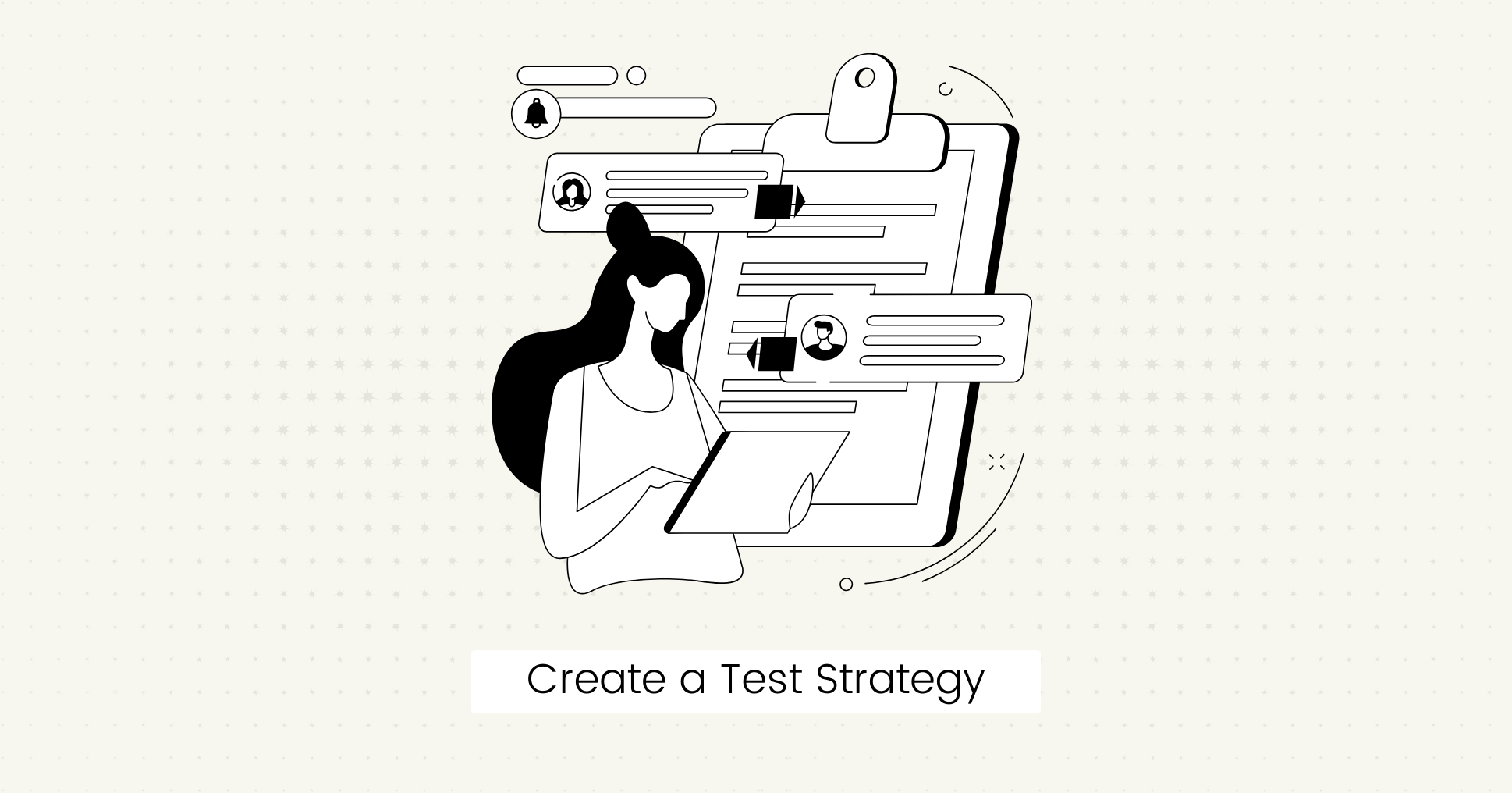
Now that you know your project quality goals and the people involved, it's time to create a strategy for achieving them.
A QA testing strategy outlines the approach, procedures, and types of testing you will perform.
Your test strategy should also include guidelines for creating and maintaining test cases:
- Detailed instructions for executing the tests.
- Expected outcomes.
- Pass or fail criteria.
- Reported results.
Select the procedure for testing:
- Manual Testing: Manually create and test cases to check for errors.
- Automated Testing: Use automation tools and test scripts to run tests.
- Exploratory Testing: Free testing without any pre-defined test cases.
Determine the testing level and sequence:
- Unit Testing: Check individual components for functionality.
- Integration Testing: Test the interaction between different parts to see how well they work together.
- System Testing: High-level testing to validate the entire system.
- User Acceptance Testing (UAT): Validates that the software meets the required specifications and user's needs.
The type of testing includes:
- Functional Testing: Test that all features function as expected.
- Performance Testing: Evaluate the system's performance under various conditions.
- Usability Testing: Test if the product is easy to use.
- Security Testing: Find and fix vulnerabilities and security threats.
- Regression Testing: Verify that new changes do not cause the existing functionalities to fail.
Tip:
Check out QA checklist examples to create a full coverage testing strategy for your QA activities.
Choose the Testing Tools
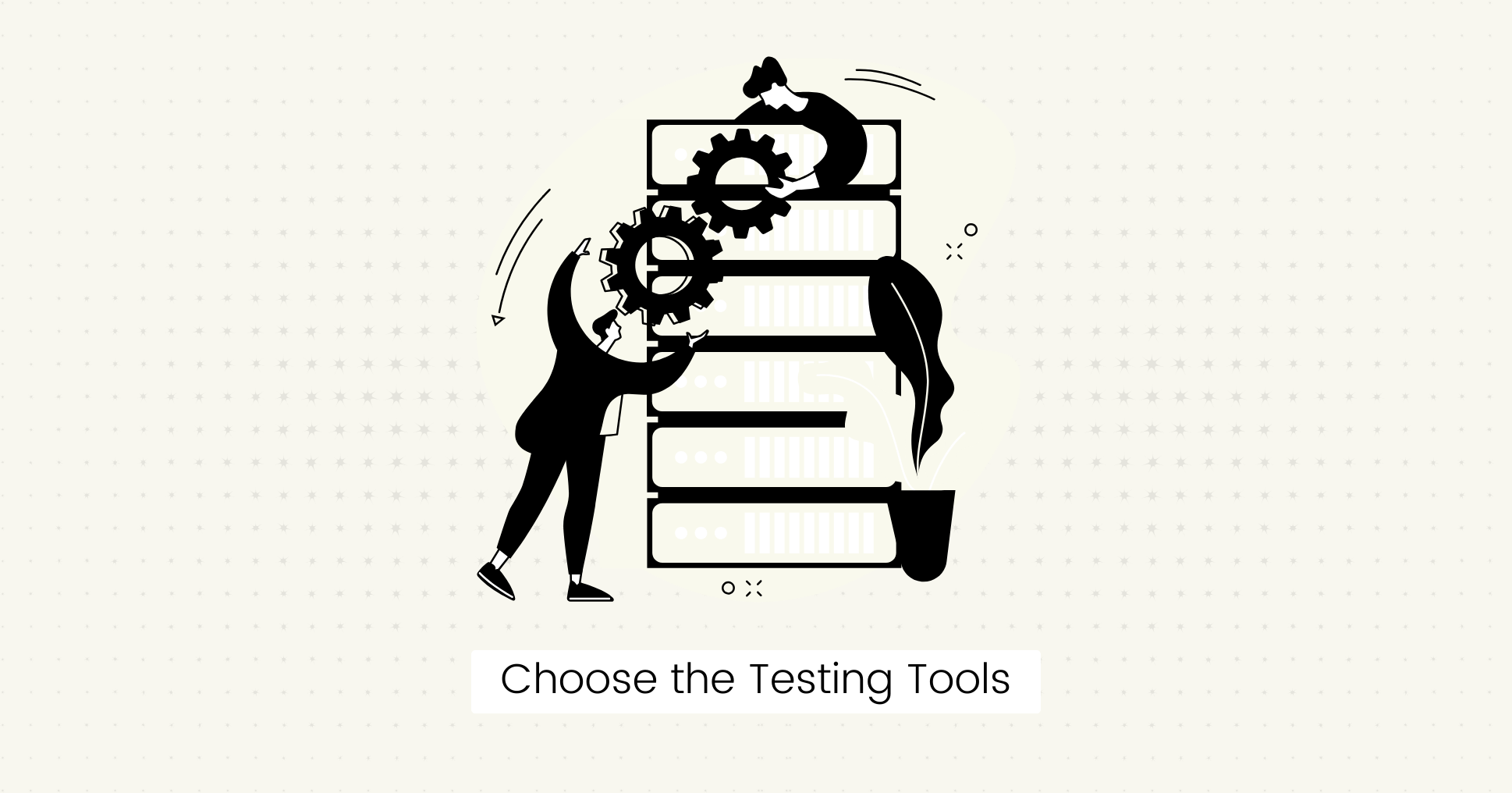
Once you have established a solid testing strategy and written test cases, you need to run them.
Set up a suitable test environment for software quality assurance testing that replicates the production environment.
This includes:
- Hardware and software configurations required for testing.
- Network settings and access permissions.
- Test data setup and management.
Select a tool that fits your project requirements and application technology stack.
- UI testing tools like Lost Pixel.
- Regression testing tools.
- Performance and load testing tools.
- Usability testing tools.
- Accessibility testing tools.
- Test management tools like TestRail.
Tip:
Check out QA automation tools to automate the entire process of quality assurance.
Outline Risk Management Process
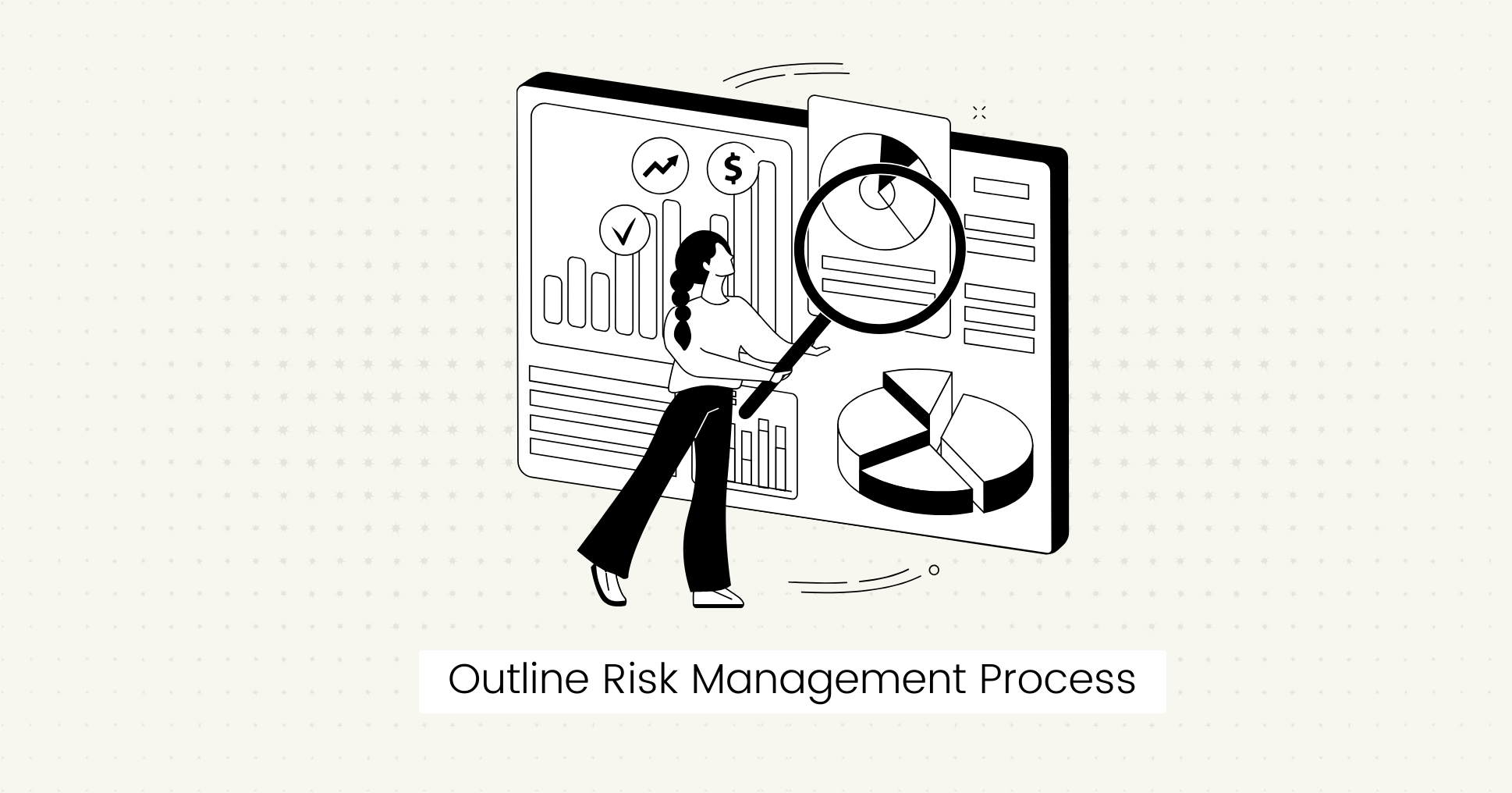
It is important to have a tracking system for easy management and resolution of issues while executing tests.
You can do this by following these steps:
- Identify the risks that may affect product quality.
- Find out how frequently they occur.
- Determine how severe are the impacts on critical functionality.
- Create a risk management plan to prevent, detect, and report issues.
The risk-tracking process will outline the following aspects:
- Guidelines for identification, reporting, and documentation.
- Categorization of issues based on severity and priority.
- Assign the issues to the responsible team or individual.
- Audits and checks for quality improvement.
- Log files with screenshots and steps to reproduce.
- Collaboration between developers and testers to resolve issues quickly.

Set up visual regression tests in minutes with Lost Pixel Platform. Do not let your users find bugs first.
Review and Improve
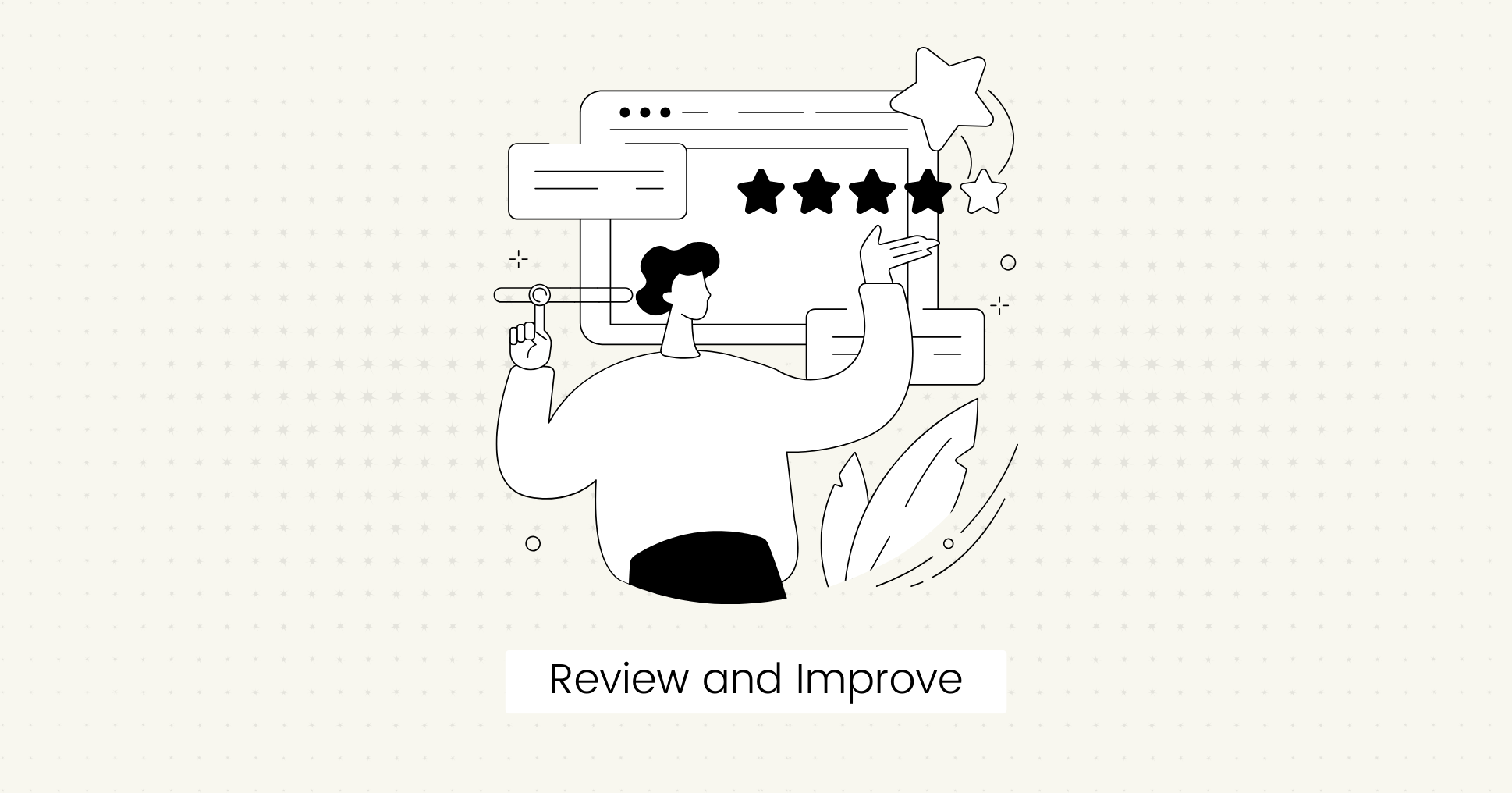
Finally, review the plan to check that all guidelines and procedures are followed.
- Collect feedback from all stakeholders.
- Identify areas for improvement based on user feedback.
- Update the plan and make adjustments as needed.
- Address any concerns and get approval before implementation.
- Make continuous improvements to maintain product quality.
Best Practices for Creating A QA Plan
Here are the best practices you can follow:
- Involve all team members so everyone understands their roles.
- Write test cases that are easy to understand and follow.
- Cover all possible scenarios, including edge cases.
- Automate regression tests to save time and avoid repetitive tasks.
- Conduct code reviews to identify issues early in the development process.
- Communicate and hold regular meetings to discuss progress, issues, and next steps.
- Use metrics and analytics to measure the efficiency of your QA efforts.
- Document everything, including the procedures, test cases, and results.
Final Words
A quality assurance plan is an important part of the system design lifecycle.
It provides a strategic roadmap for the QA team and saves time and money.
Following these steps, you can deliver quality software with a great user experience.

Set up visual regression tests in minutes with Lost Pixel Platform. Do not let your users find bugs first.
FAQs
What are the deliverables of a QA plan?
The deliverables of a QA plan include test cases, test scripts, test reports, defect logs, and summaries of the QA process.
What are the principles of quality assurance?
Quality assurance principles include customer focus, continuous improvement, process approach, team involvement, and data-driven decision-making.

About Dima Ivashchuk
Hey, I'm - Dima the co-founder of Lost Pixel. I like modern frontends, building stuff on the internet, and educating others. I am committed to building the best open-source visual regression testing platform!
